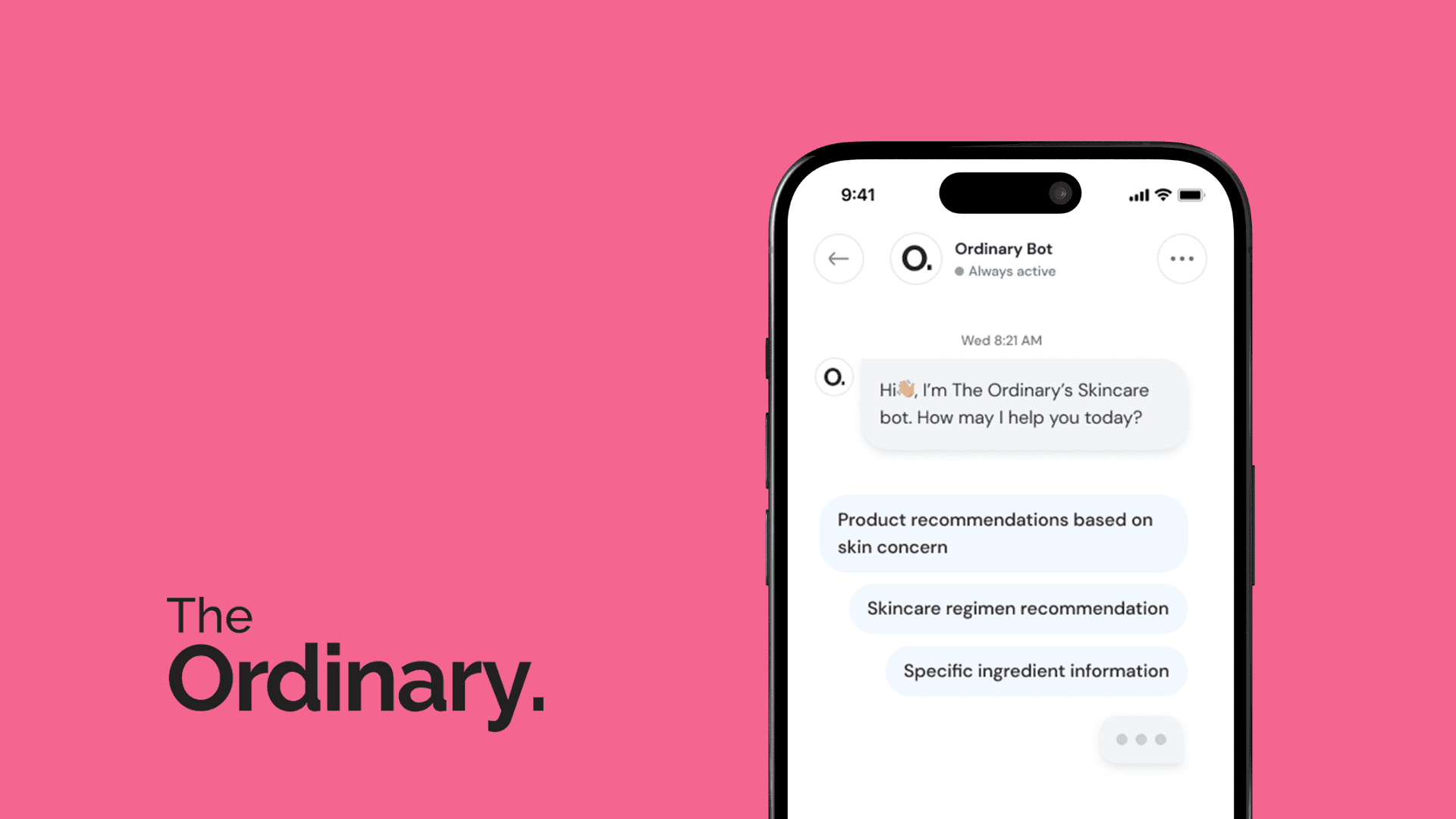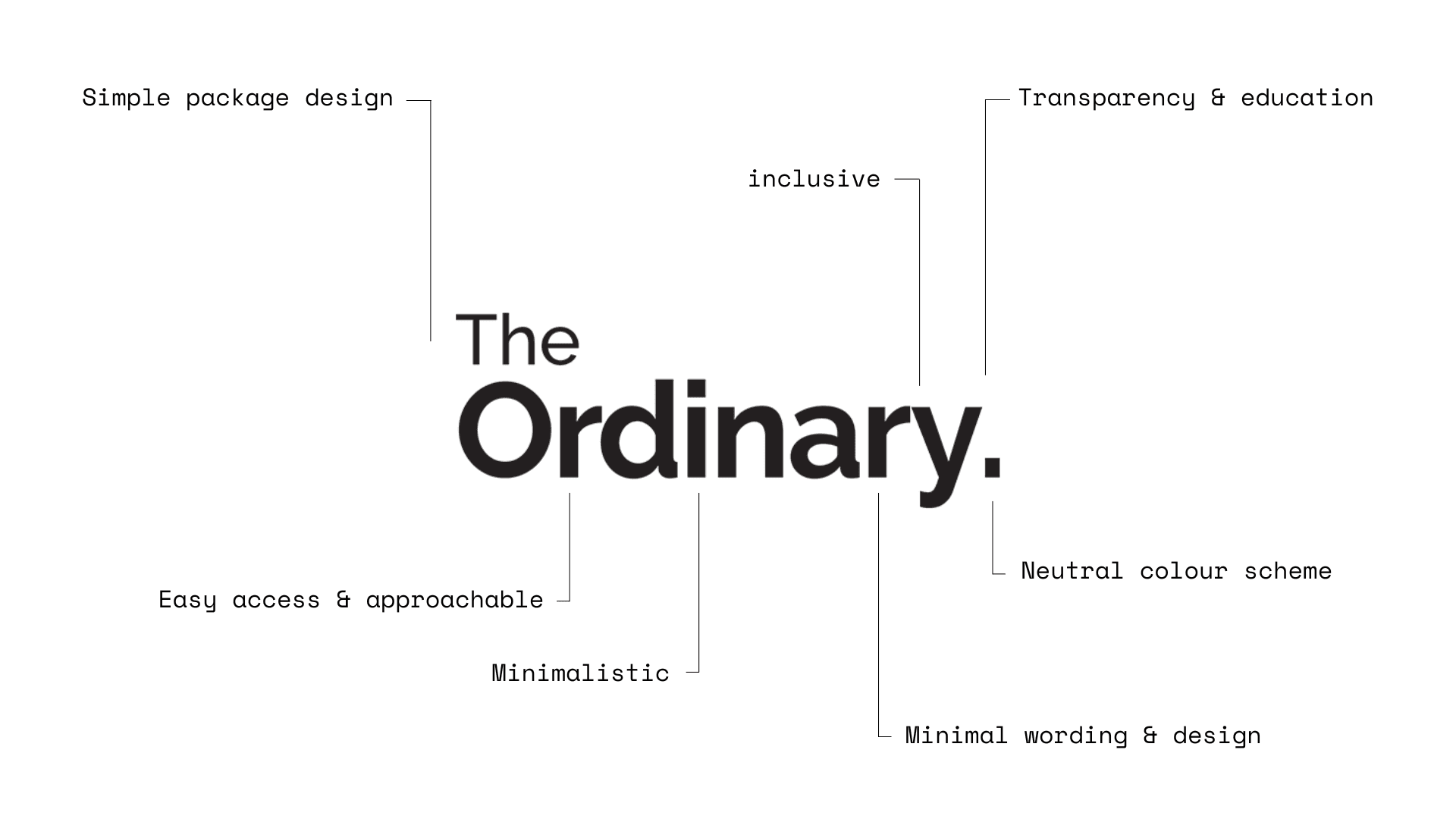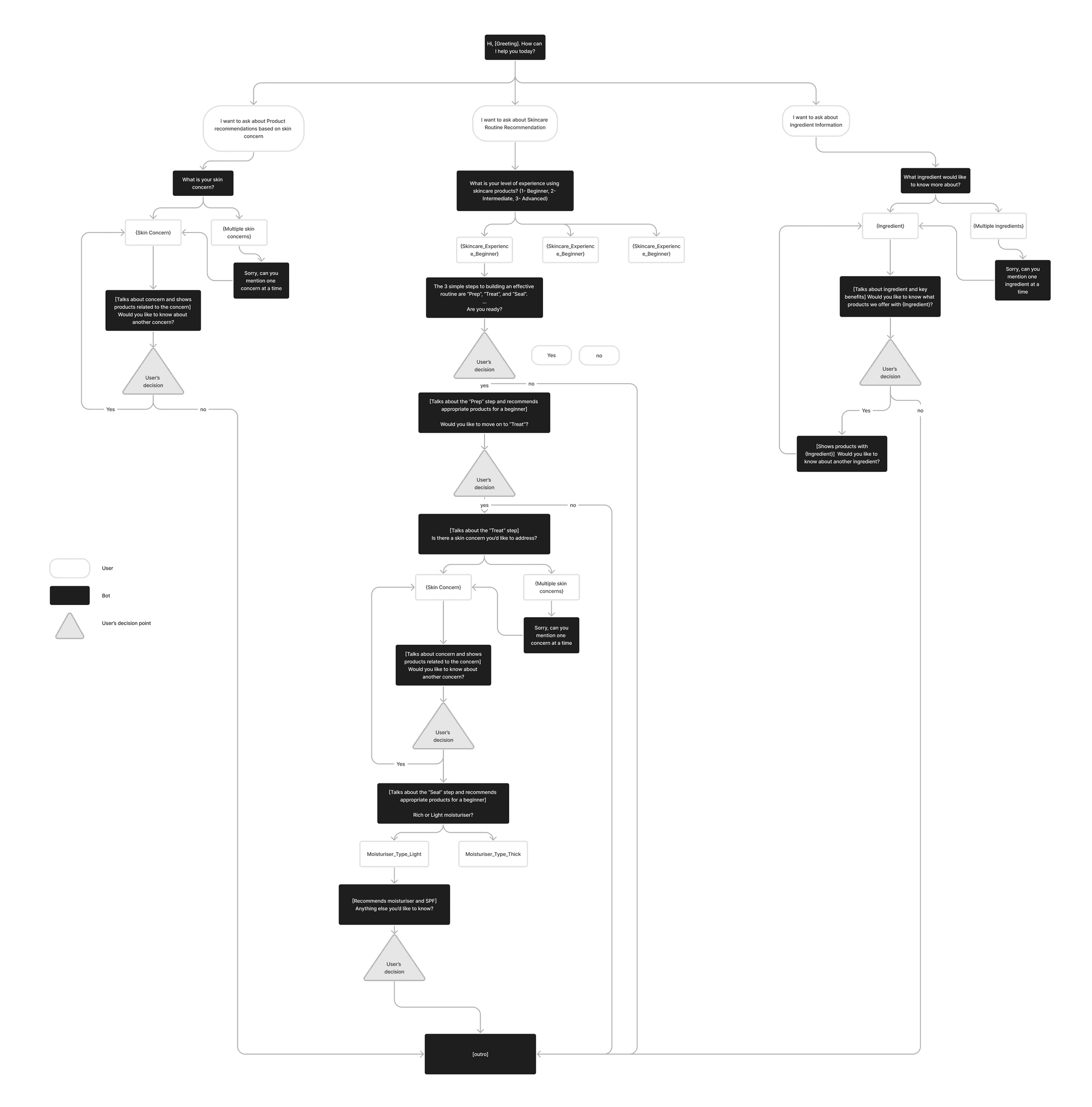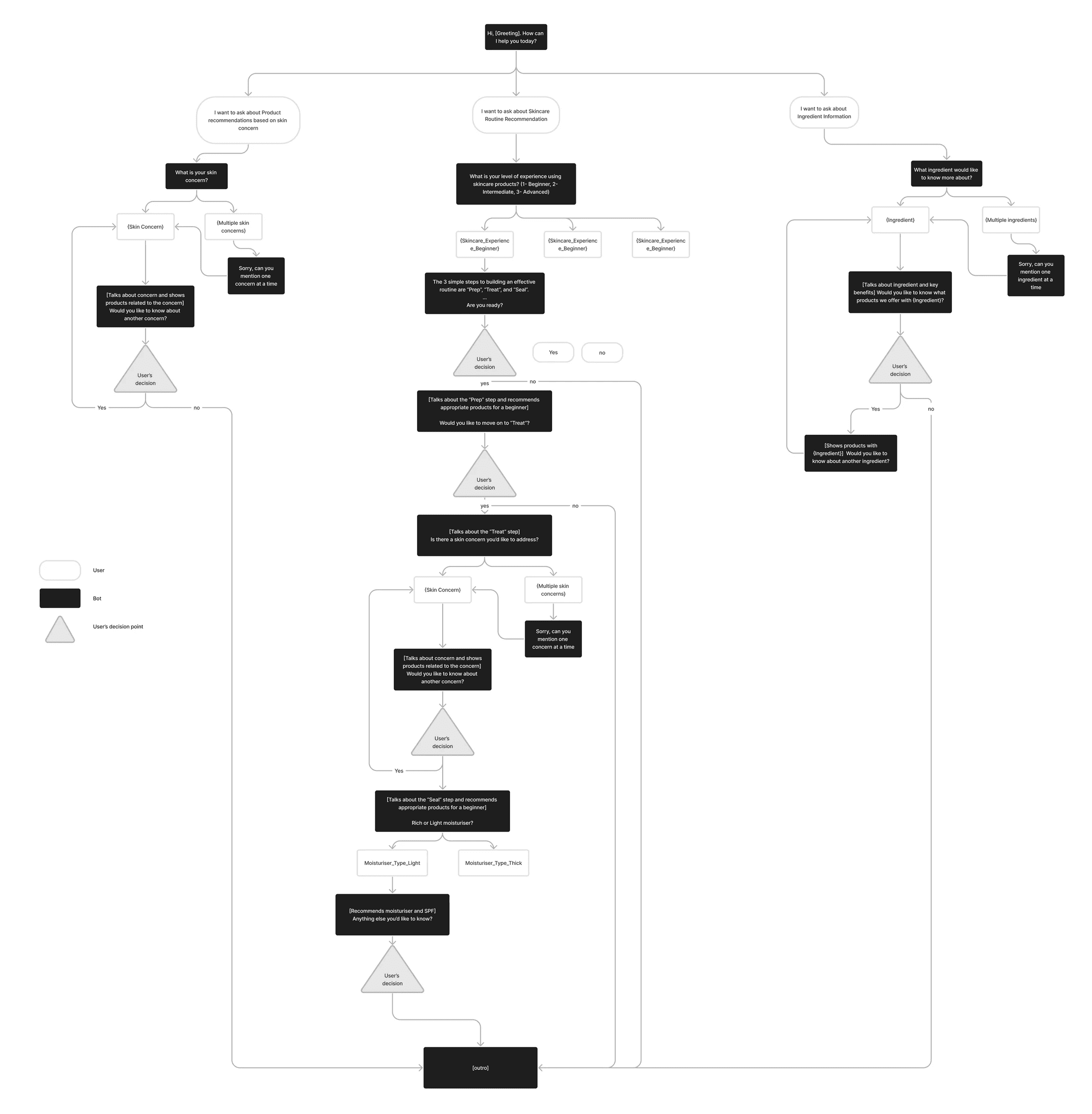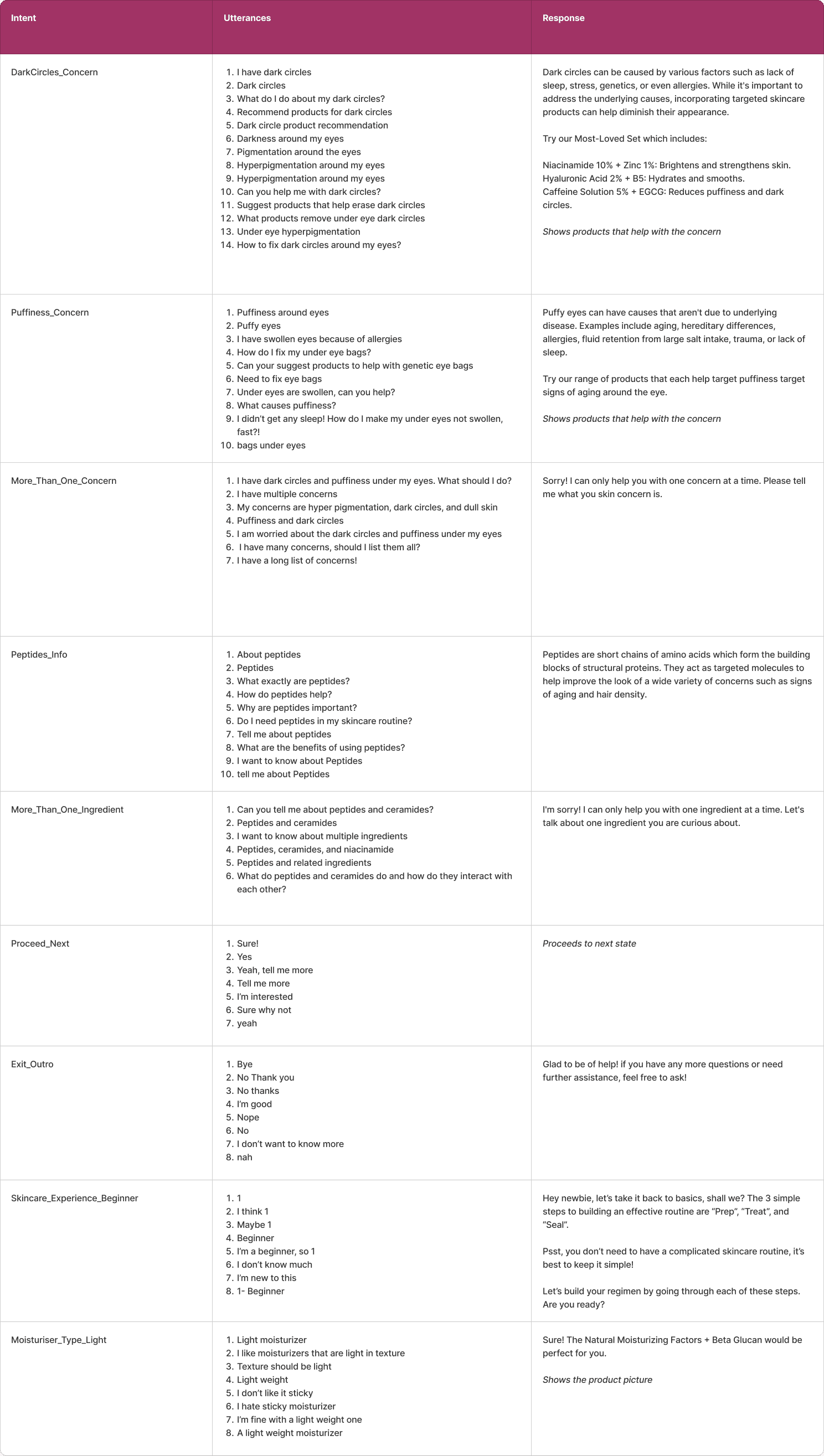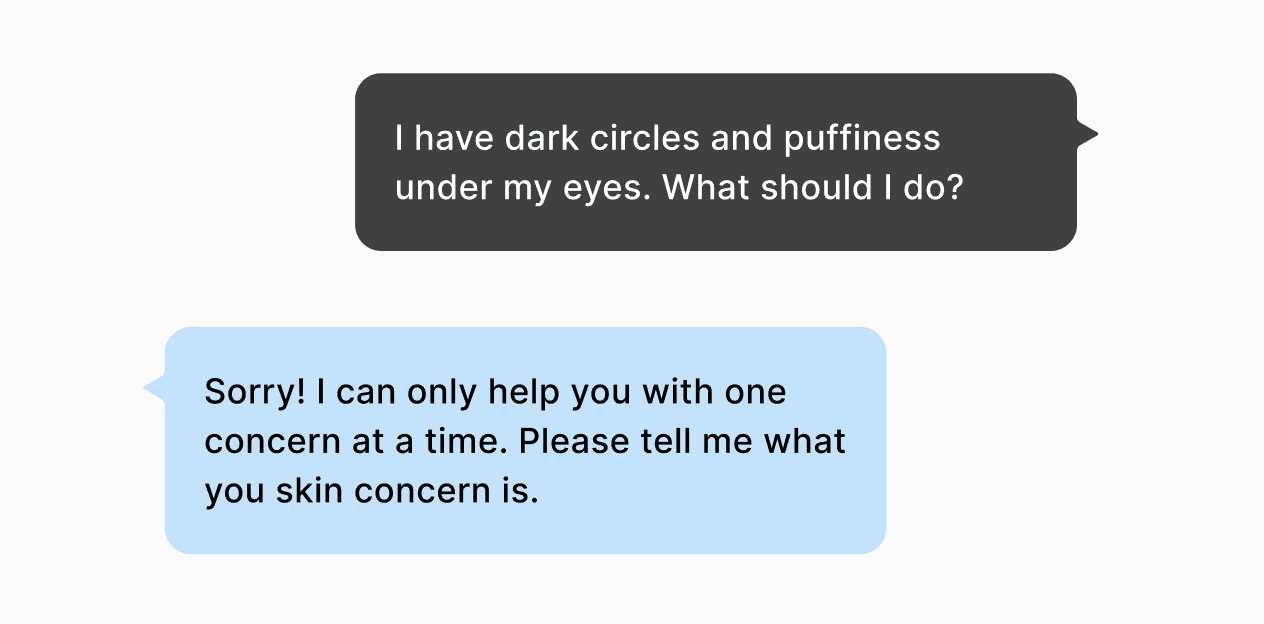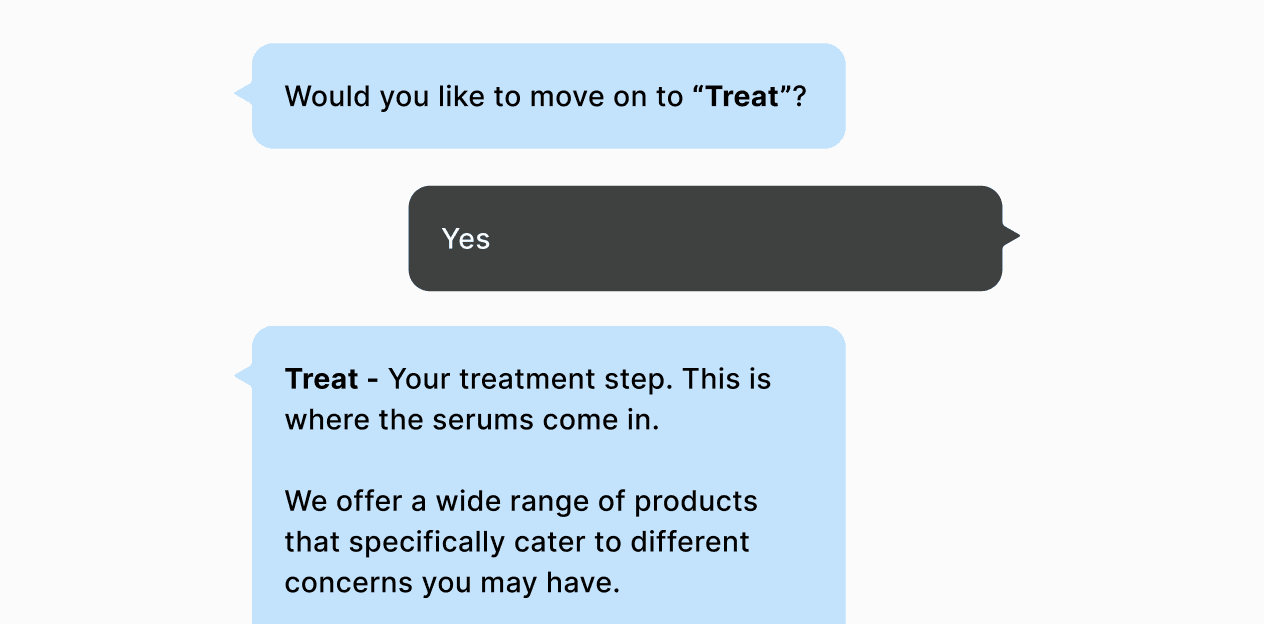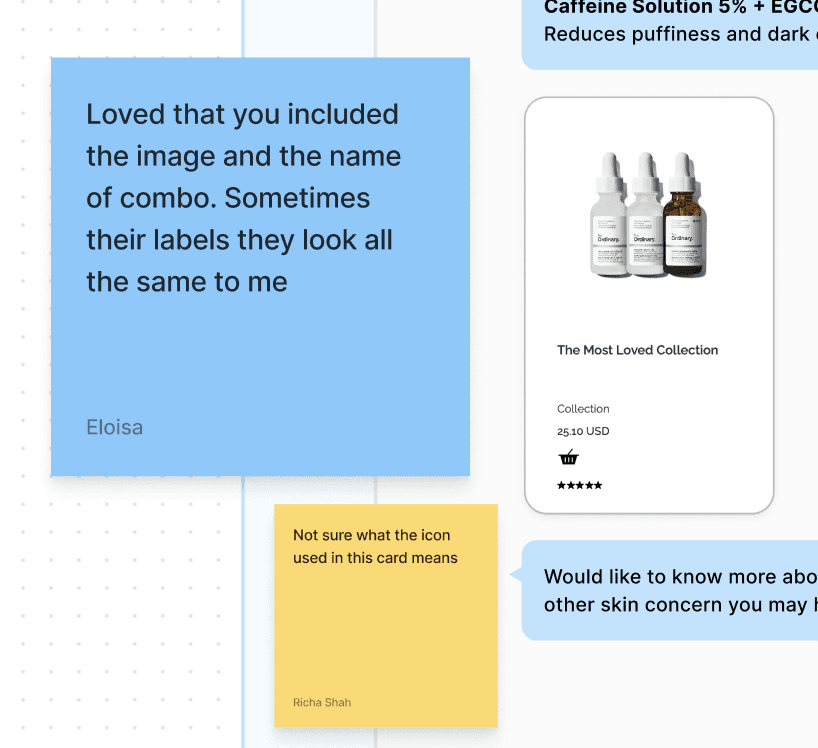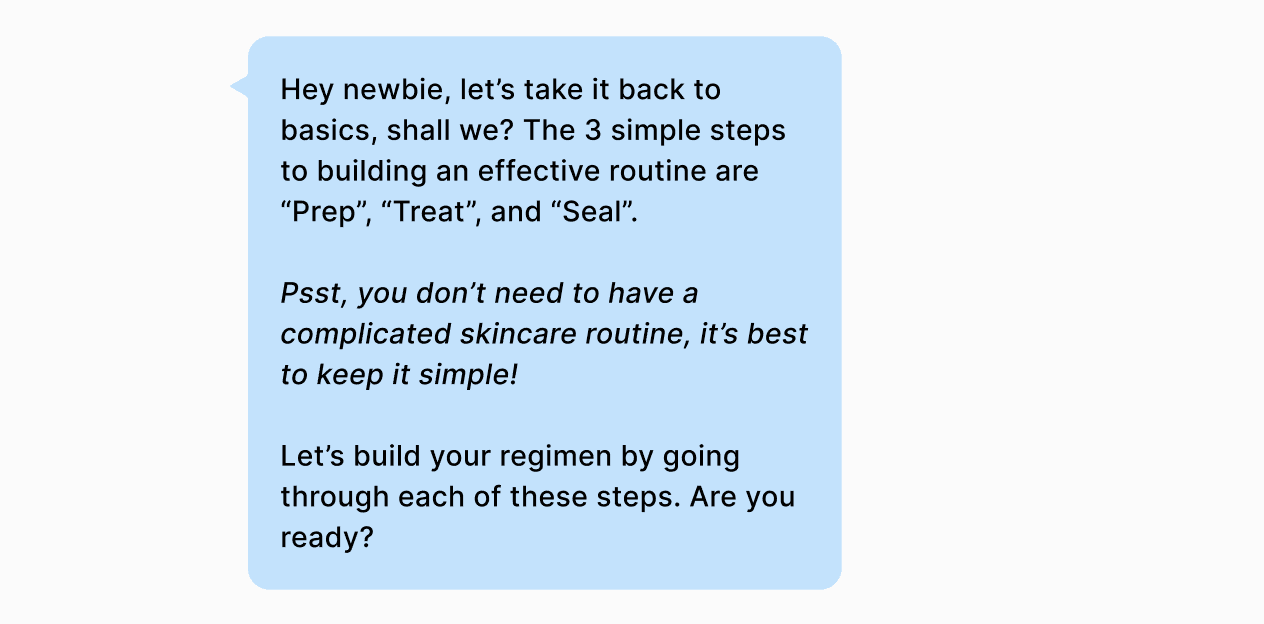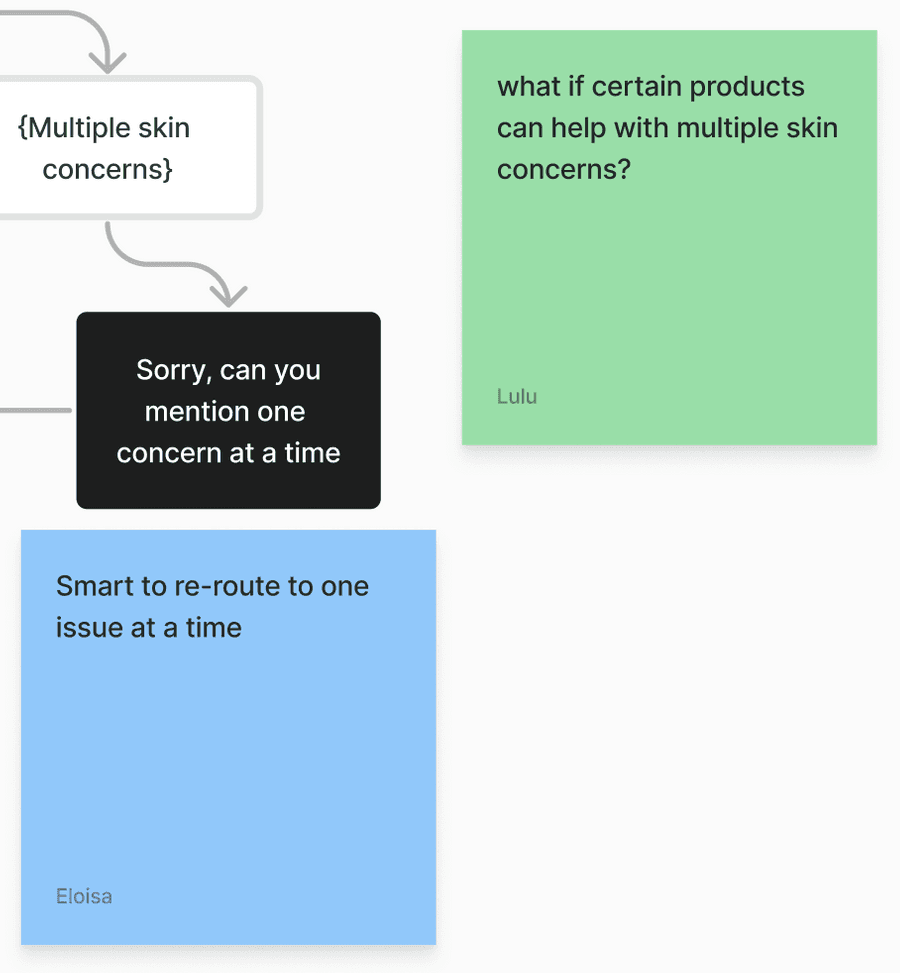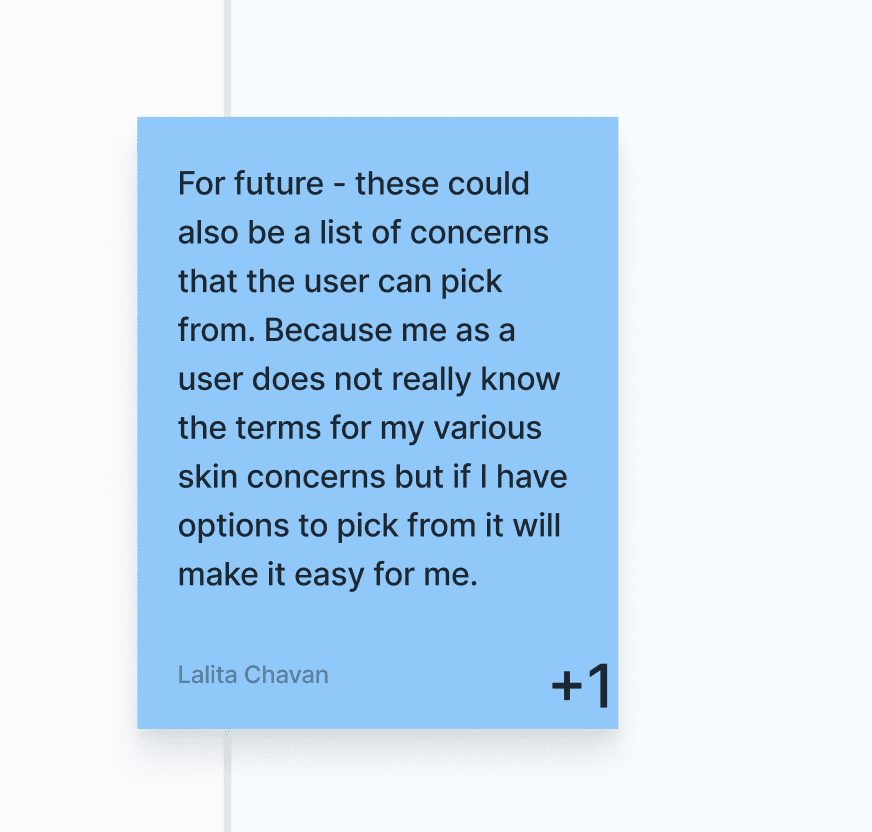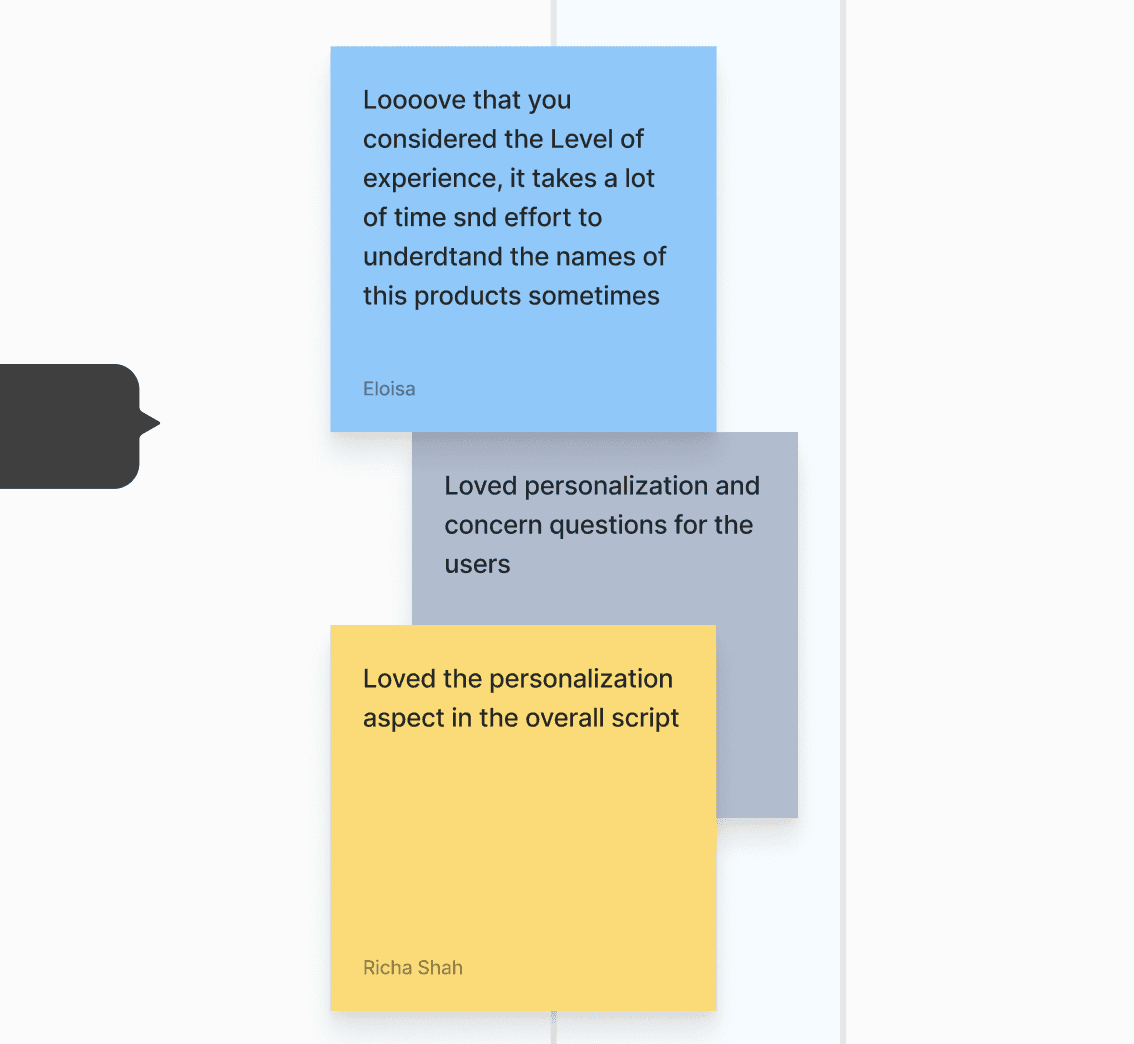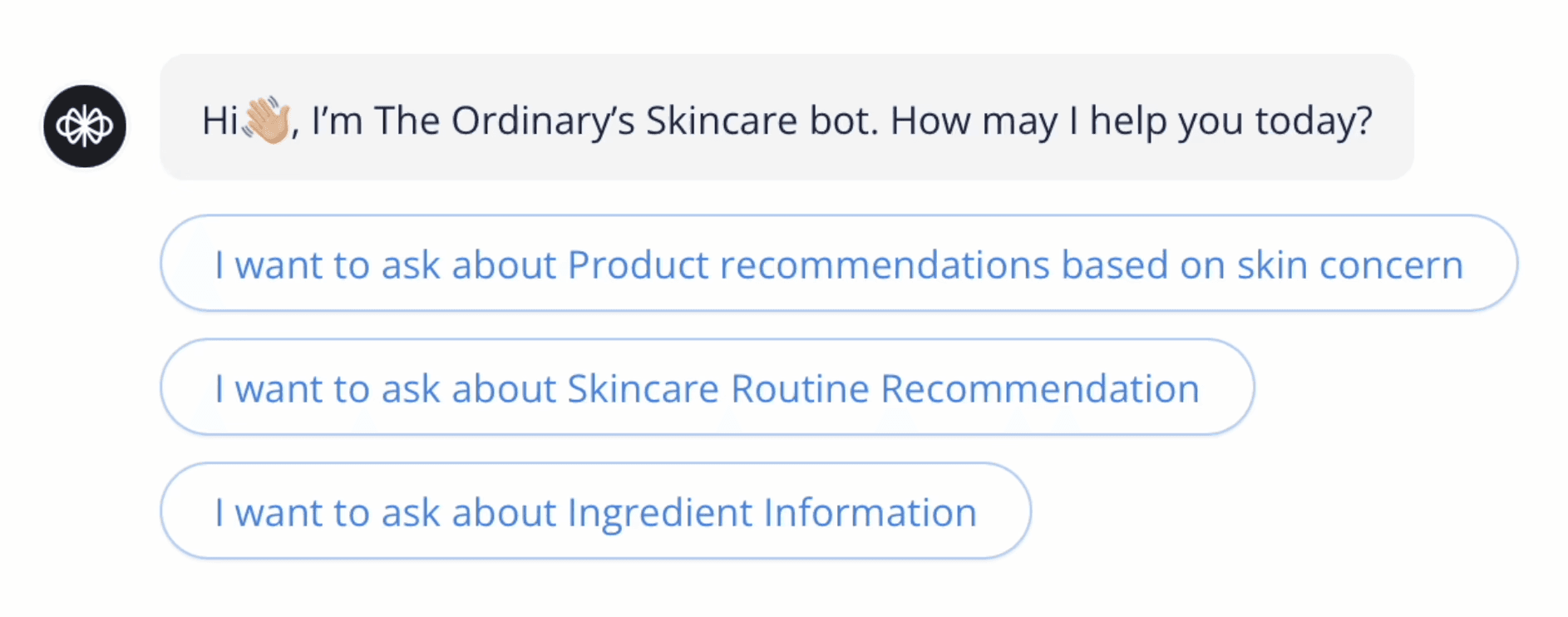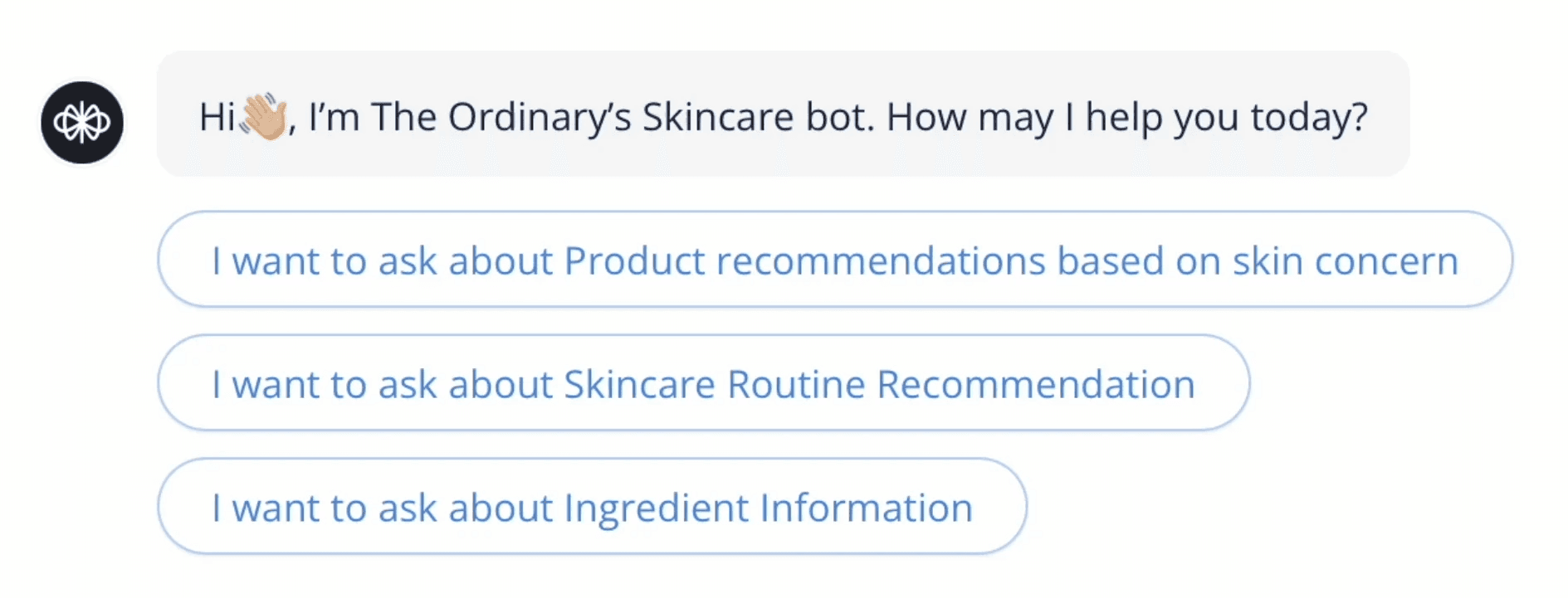Ask The Ordinary:
Skincare ChatBot
Chatbot experience designed through conversational UX principles to simplify The Ordinary’s products and guide users to navigate product recommendations, ingredient education, and their personalized personalized skincare routines, all while staying true to The Ordinary's approachable, science-focussed brand voice.
Team
Myself + 1
Duration
3 Weeks
Tools
Skills
The Challenge
Skincare can feel overwhelming, especially for beginners unsure how to choose products or combine ingredients safely. The Ordinary offers affordable, clinical-grade products but users often struggle to:
Understand how to build a routine
Learn about ingredient benefits and side effects
Find products for specific skin concerns
How might we help users confidently navigate The Ordinary's product line and build routines that feel personalized, while staying true to The Ordinary's science-driven voice?
The Solution
Design a chatbot that:
Educates users in clear, brand-aligned language
Handles diverse user questions
Feels informative and trustworthy without being overly friendly
Design Approach
An end-to-end process was employed, combining research, brand insights, and iterative design techniques.
Brand-Aligned Persona: Defining a chatbot voice that’s friendly, professional, and reflective of The Ordinary’s science-focused identity.
Conversational Flow Design: Mapping user journeys and crafting dialogue flows for personalized recommendations and ingredient education.
NLU Training Data: Curating user utterances and intents to improve the chatbot’s ability to understand varied user queries.
Prototyping & Iteration: Building a functional prototype in VoiceFlow, conducting user testing, and refining flows for clarity and usability.
The Process
Defining the Chatbot’s Personality
Interaction goals
Provide information on the products offered by the brand, about the ingredients in their products, and suggest ways to effectively use these products, in an effort to promote their products and help users understand how to use them to their full potential.
Level of Personification
The bot provides helpful skincare tips and recommendations in a straightforward manner without overtly human characteristics. Some of its character traits are 'informative', 'knowledgeable', 'professional', and 'inclusive'. It has a basic visual representation, in the form of an icon (Ordinary logo), to accompany its messages.
Mapping Use Cases and Flows
Use Cases
Core use cases were defined based on research into common skincare challenges, especially among beginners navigating The Ordinary’s products. The 3 primary use cases were:
Conversational Flow
A conversation flow chart was then developed to bring these use cases to life, mapping how users navigate key scenarios. This flow chart served as the blueprint for building the VoiceFlow prototype and ensuring the chatbot felt structured, helpful, and easy to navigate.

